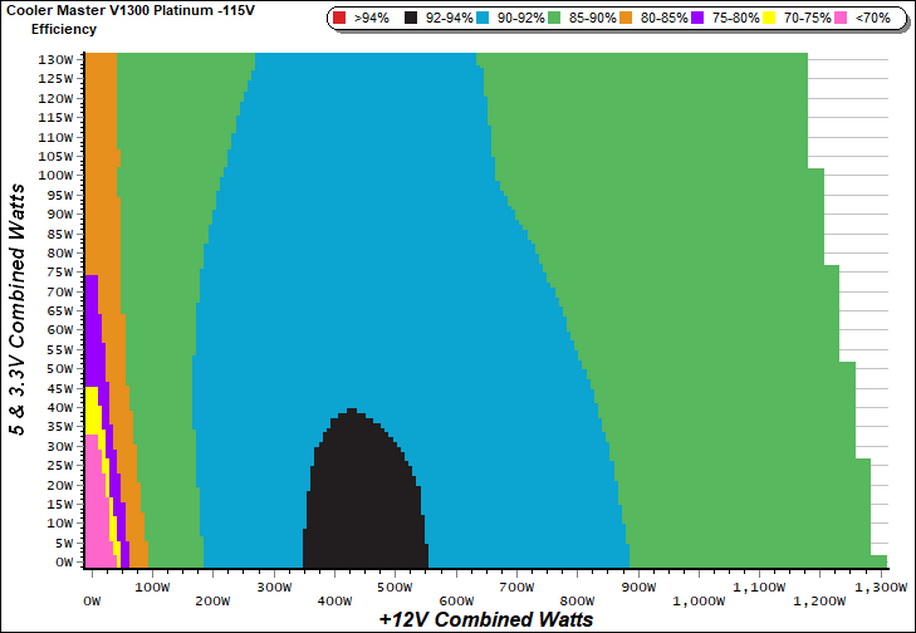Cooler Master V1300 Platinum Power Supply Review: Plenty of Juice
Why you can trust Tom's Hardware
Protection Features, DC Power Sequencing, Cross-Load Tests and Infrared Images
Protection Features
Check out our PSUs 101 article to learn more about PSU protection features.
| Protection Features | |
| OCP | 12V1: - 12V2: 66A (122.2%), 11.75V 5V: 35.3A (141.2%), 4.904V 3.3V: 34.5A (138%), 3.333V 5VSB: 7A (233.33%), 4.813V |
| OPP | 1806.1W (138.93%) |
| OTP | ✓ (172°C @ 12V Heat Sink) |
| SCP | 12V: ✓ 5V: ✓ 3.3V: ✓ 5VSB: ✓ -12V: ✓ |
| PWR_OK | Proper Operation |
| NLO | ✓ |
| SIP | Surge: MOV Inrush: NTC Thermistor & Bypass Relay |
We couldn't find the over current protection (OCP) threshold at +12V1, of the limitations in the Fast Auto loader that we used for this task. The second +12V rail has a properly set OCP while the minor rails should be set within 130%. There is no need for so high of an amperage on those rails. Finally, the 5VSB rail is much stronger than what CM states, keeping its voltage in control even with 7A current output.
The over power protection (OPP) allows for more than 1800W before it shuts down the PSU. We would like to see a triggering point close to 1700W, for increased protection under high operating temperatures. Lastly, the over temperature protection (OTP) works well.
DC Power Sequencing
According to Intel’s most recent Power Supply Design Guide (revision 1.4), the +12V and 5V outputs must be equal to or greater than the 3.3V rail at all times. Unfortunately, Intel doesn't mention why it is so important to always keep the 3.3V rail's voltage lower than the levels of the other two outputs.


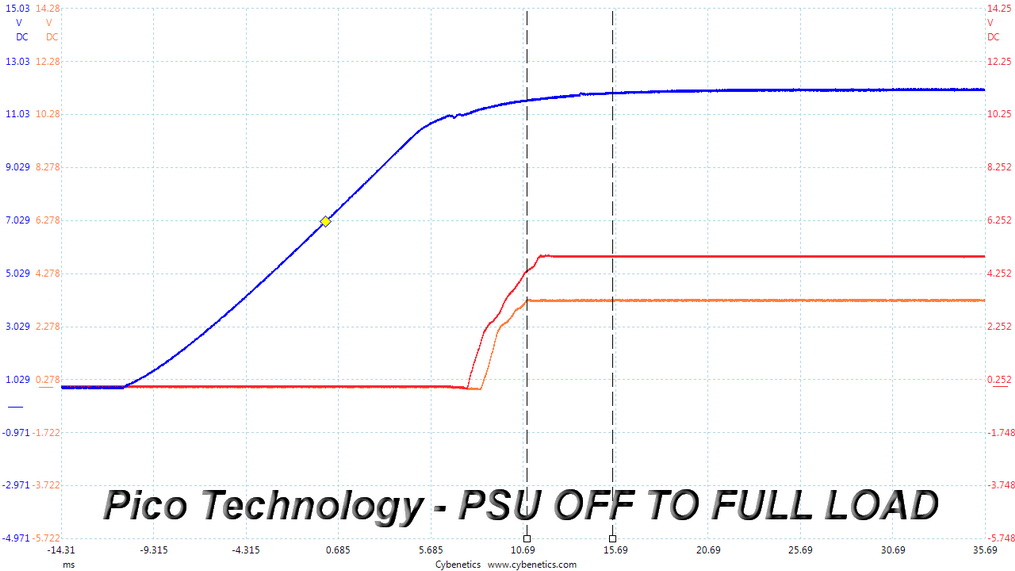
There is a slight problem in the second test, where the 3.3V rail is a bit higher than 5V for a very short period. In the other two tests everything rolls fine.
Cross Load Tests
To generate the following charts, we set our loaders to auto mode through custom-made software before trying more than 25,000 possible load combinations with the +12V, 5V, and 3.3V rails. The deviations in each of the charts below are calculated by taking the nominal values of the rails (12V, 5V, and 3.3V) as point zero. The ambient temperature during testing was between 30 to 32 degrees Celsius (86 to 89.6 degrees Fahrenheit).
Load Regulation Charts
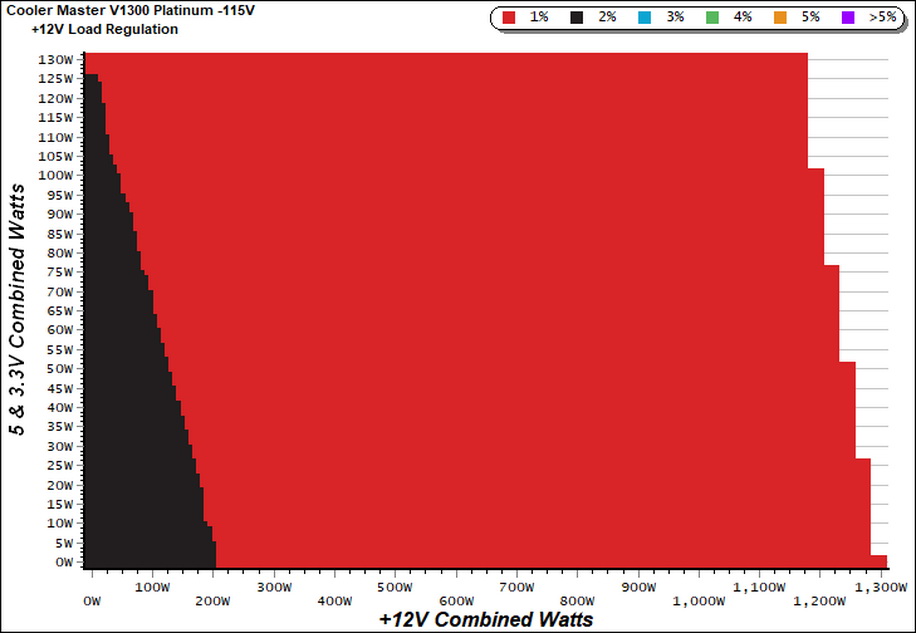

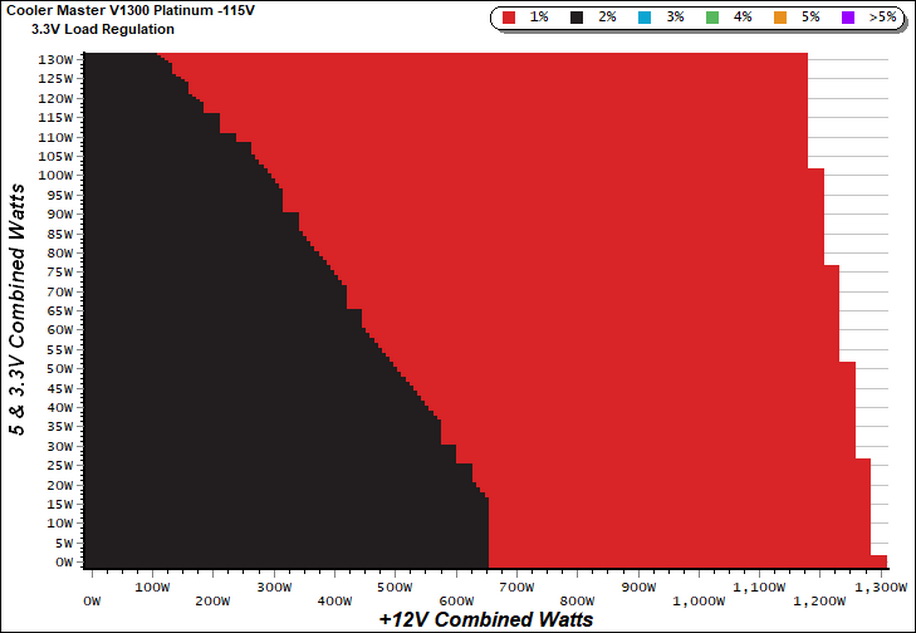
Efficiency Chart
There is a small region, where the registered efficiency is higher than 92%.
Get Tom's Hardware's best news and in-depth reviews, straight to your inbox.
Ripple Charts
The lower the power supply's ripple, the more stable the system will be and less stress will be also applied to its components.



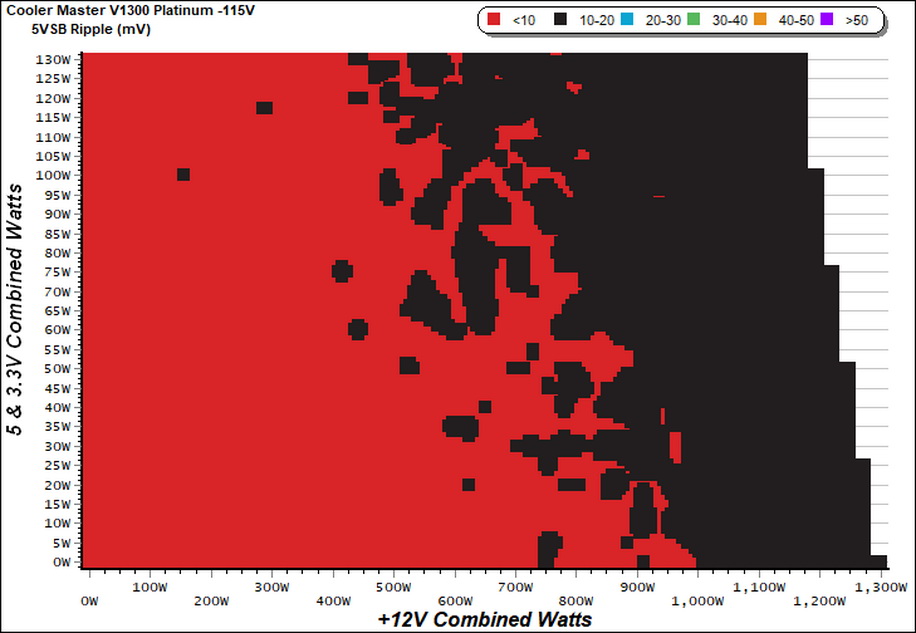
Infrared Images
We apply a half-load for 10 minutes with the PSU's top cover and cooling fan removed before taking photos with a modified FLIR E4 camera able to deliver an IR resolution of 320x240 (76,800 pixels).

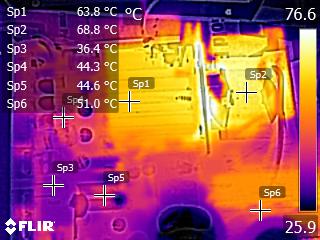
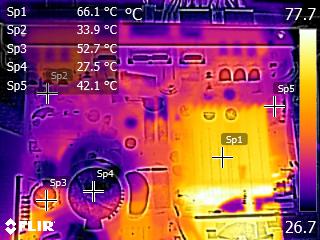
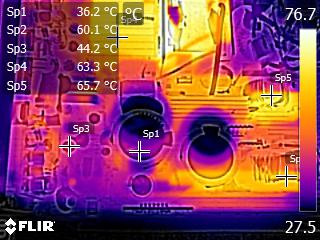
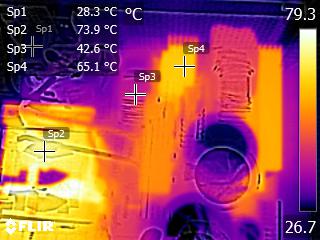

With 650W load applied for ten minutes, and the PSU operating at passive mode, the temperatures at the internals are kept in control.
MORE: Best Power Supplies
MORE: How We Test Power Supplies
MORE: All Power Supply Content
Current page: Protection Features, DC Power Sequencing, Cross-Load Tests and Infrared Images
Prev Page Load Regulation, Hold-Up Time, Inrush Current, Efficiency and Noise Next Page Transient Response Tests, Ripple Measurements and EMC Pre-Compliance Testing
Aris Mpitziopoulos is a contributing editor at Tom's Hardware, covering PSUs.
